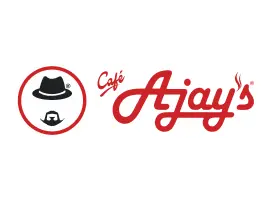
Remember the days of radio jingles and singing along to TV ads. The ad landscape has done a 180 turn since then. Evolving from static, one-way ads to dynamic, interactive experiences that follow us everywhere.
This evolution of advertisements is more than just a fancy marketing term. It’s a complete shift in how brands connect with consumers and it’s something we all experience every single day. In this blog, we are about to take a joyride through the world of old and new advertisements.
Table of Contents
- When did Advertisements Actually Started?
- Evolution of Advertisements
- Difference Between Old & New Advertisements
- Are Old Advertisments Relevant Today?
- In Conclusion
- Frequently Asked Questions
When did Advertisements Actually Started?
The first known commercial advertisements were being found daily by European explorers in news sheets issued by Venetian traders; placed between gossip, trivia, advice and fanciful tales of wonderful places. These news sheets became generally known as gazettes because each one cost a gazette (a Venetian coin that was in use at the period)
The term quickly gained popularity and became a synonym for the modern business organisation.
Early in the 20th century, when the modern advertising agency was at its height of popularity, some of the most famous catchphrases were created.
In India, the first advertisement dates back to January 29, 1780, and was printed in “The Bengal Gazette,” a weekly newspaper that was the country’s first publication.
Evolution of Advertisements
Print advertisements

In India, the practice of advertising expanded along with the popularity of newspapers. Advertisers recognised the ability of newspapers to reach a larger audience. The content and style of print ads gradually changed during the late 19th and early 20th centuries.
To get readers to pay attention, advertisers started experimenting with images and attention-grabbing headlines. Photographs and graphics were frequently used, giving the ads a visual component. Newspapers became an opportunity for Indian firms like Godrej, Tata and Amul to promote their products and services.
Era of radio advertisements
The Indian Broadcasting Company, known as All India Radio (AIR), was established on July 23, 1927, marking the beginning of radio broadcasting in India. It was around this time that the use of radio as a medium for advertising began to show.
Let’s take a trip back to those times when marketers realised the potential of radio. The first paid radio ad was aired by the Indian State Broadcasting Service (later renamed AIR) in the early 1930s. It was the start of a new age in Indian advertising, though the details are somewhat unclear.
Golden Age of TV ads
In India, television advertising first appeared when national broadcaster Doordarshan started airing regular shows in the early 1960s. This was a major turning point for the country’s advertising sector, providing companies with a fresh and effective platform to market their products and services.
Even though the early TV commercials were somewhat basic, they set the stage for the present lively and varied environment of TV advertising in India.
Surf Excel’s “Lalitaji” campaign is among the most noteworthy and impactful TV commercials in India. This campaign was launched in the 1980s and starred the gifted actress Kavita Chaudhary as Lalitaji.
Lalitaji was presented in these advertisements as a cautious homemaker who understood the importance of money. Because Surf Excel offered more washes per packet, she would frequently compare pricing and select it. “Surf Excel hai na,” the tagline, came to represent wise purchasing choices.
The era of liberalisation
India started the process of economic liberalisation in 1991, welcoming competition and investment from abroad. As a result, the field of advertising underwent a dramatic change. Television advertising increased as foreign businesses started focusing on the Indian market. Brands such as Nestle, Pepsi and Coca-Cola acquired broad acceptance due to their captivating television advertising.
Hoarding Advertisements
Although hoardings and billboards are commonplace in Indian cities and towns today, their origins can be found in the colonial era. Outdoor advertising (OOH) was first used by the British to advertise products and services. The first billboards, which included adverts for many consumer goods, were put up in major cities including Kolkata, Mumbai and Chennai.
These early billboards were put up in high-traffic locations with hand-painted advertisements. Large, attention-grabbing images combined with concise writing became the standard for effective OOH advertising.
Celebrity Advertising

Celebrity endorsements aren’t exactly an innovative idea. Since the beginning of the 20th century, when famous people like Greta Garbo and Charlie Chaplin promoted products, it has been an essential part of advertising. However, when television and film became more popular in India, the trend became more noticeable.
In India, people look forward to superstars and try to live lifestyles similar to theirs. Celebrities are strong influencers over the general public because of their admiration and interest in them. The decisions and inclinations of their favourite celebrities are often trusted by Indian customers, which makes celebrity endorsements an effective marketing strategy.
Digital and Online Advertisements
But then, the internet happened. Suddenly, ads could be more targeted, more interactive and way more creative. Modern advertising entered like the cool kid in the advertising class. Now, instead of just showing the ads to you, ads try to engage you, entertain you and even make you laugh (or cry, but hopefully not in a bad way). They are on your social media feeds, following you around the web, and even popping up in the videos you watch.
So, what exactly changed with the internet? Well, consumer behaviour did a complete 360. We are no longer passive ad viewers; we have become active information seekers. We don’t just want to be sold to; we want to be educated, entertained and inspired. And that’s where social media agencies started rising to craft those clever social media posts, design interactive websites and tell brand stories that resonate with you
Social media sites like Facebook, Twitter and Instagram now allow brands to set up pages and utilise them to interact with their audience. Because of this, the communication became more personalised. As a result, influencer marketing began to take off, with companies teaming up with social media influencers to market their goods to their followers. Nowadays there is also a social media agency specialised in one or more industries. For example, the ones who do jewellery marketing that makes you drool over diamonds, real estate marketing that takes you on virtual tours of your dream home and FMCG marketing, where brands are constantly innovating to capture your attention
Difference Between Old & New Advertisements
| Old Advertisements | New Advertisements |
|---|---|
| Mass marketing, limited personalisation | Highly targeted based on demographics, interests and online behaviour |
| One-way communication, focus on features and benefits | Two-way communication focuses on storytelling, emotions and engagement |
| Limited format options, often repetitive | Diverse formats (video, images, text, interactive elements), emphasis on creativity and innovation |
| Difficult to track results, relied on impressions and surveys | Trackable metrics (clicks, conversions, engagement), data-driven optimisation |
| High cost for prime placements, limited reach | Varied costs, can be more affordable and reach wider audiences |
| Selling products and services | Building brand awareness, loyalty and Community |
Are Old Advertisments Relevant Today?
While you might not see them as often these days, the spirit of those old advertisements may still hold some valuable lessons for modern marketing.
Timeless Principles
Core principles like emotional appeal, humour, storytelling and clear communication are just as impactful today as they were decades ago. A classic example, Coca-Cola’s “Happiness” campaign, continues to resonate across generations.
Nostalgia Factor
Tapping into nostalgia can be incredibly powerful. Utilising retro styles and references or even recreating iconic ads can trigger positive emotions and brand recall.
Authenticity & Differentiation
The simplicity and directness of some old ads can stand out in a world saturated with complex digital campaigns.
In Conclusion
Old advertisements are not completely irrelevant! The key lies in understanding their core strengths and adapting them to the modern context and to the glitzy world of social media and influencers. So, next time you spot an ad popping up in your feed, remember the journey it took to get there.
Want to create an ad masterpiece that combines the strengths of both old and modern advertisements? Then partner with a digital marketing agency and watch your brand captivate audiences in the age of fleeting attention spans. To get started contact us at hello@florafountain.com.
































